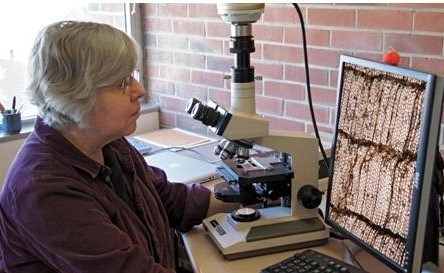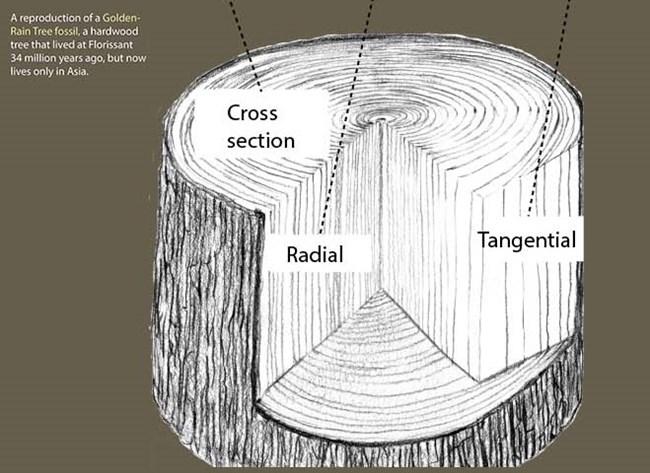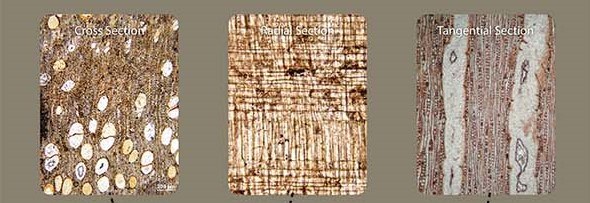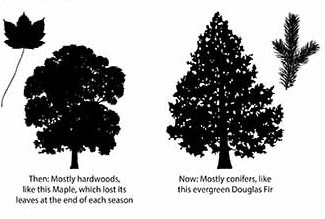

Studying Ancient PatternsBy studying the anatomical patterns of fossilized wood, scientists are able to learn about Florissant's ancient climate.Microscopic examination of different sections of fossils reveals well-preserved, exquisite cellular details that help us identify the type of trees and tell a story about the past. Making the CutFossil wood must be cut in three different orientations to see all of the microscopic features needed for wood identification. Their cellular structure is then compared to living trees.The three sections below show the fossil wood of a Golden-Rain Tree. 
A Closer LookDr. Wheeler's study of fossilized wood helps us understand the forest and climate that existed at Florissant 34 million years ago. Her method of examining the cellular structure of petrified wood- tells us what types of trees grew here and in what type of climate they grew.Ultimately, she found that the Eocene forest was much different than the forest we see here today. Tree Ring Porosity: A Climate ClueTrees that have wide water-conducting vessels at the beginning of the growing season (earlywood) and smaller vessels later in the growing season (latewood) are ring porus.The presence of vessels indicates that the wood was a hardwood (flowering plant), and their arrangement tells us about the climate. 

Ancient Forest Versus Modern ForestMost of the large petrified trees here are redwoods (Sequoia), which are conifers- or cone-bearing trees.The results of Dr. Wheeler's study of fossilized hardwood trees- flowering plants- tell us that most have distinct ring porous wood and grew in seasonal environments and lost their leaves each season. The hardwoods that lived 34 million years ago no longer grow here and are most related to trees that now grow in eastern Asia and the easten united states. Most of the trees that grow here today are conifers. |
Last updated: September 18, 2022
